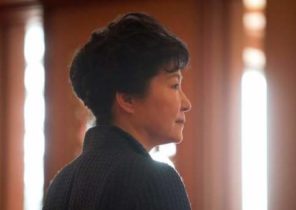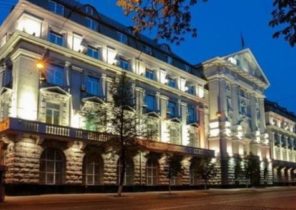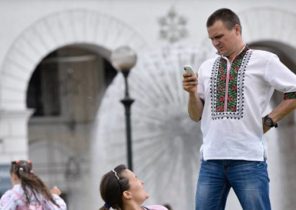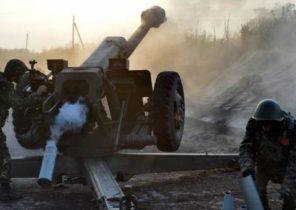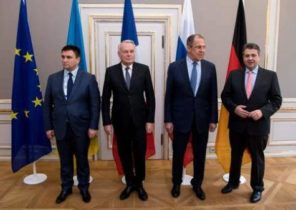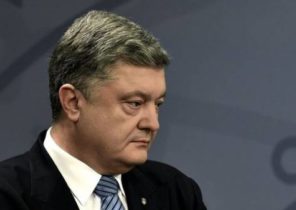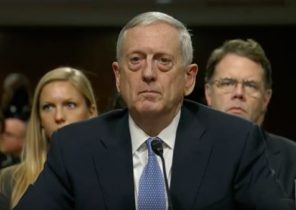
100 years ago, the fifth of January 1917, in a village not far from Moscow, born Vasily Mishin, a rocket scientist, to whom was given the task to deliver the first Russian on the moon, but he failed to do so. However, he created a series of missiles, which formed the backbone of the Soviet defense and space technology.
The car with documents von Braun
Traces of archive von Braun’s lead in Czechoslovakia in September 1945 established the Lieutenant Colonel engineer Vasily Mishin. Therefore, together with his colleague Alexander by Bereznyakova he went from Berlin to Prague. On the road of birch met sister Marina, which the Germans stole from home to work. They started working together.
With the help of documents they tracked the route of the wagon with the technical documentation in Austria. But the car did not arrived. Where could he be? They were looking for along the way. Finally from the Czech railway workers, they learned that this car quietly unhooked the Vizovice station and unloaded. The documents were in the barn! As soon as they had entered it, Misha beamed, seeing the inscription VZBV, which the Germans designated materials related to missiles “V-2”.
From the officers in the army headquarters of General Zhdanov Mishin demanded: “I need protection for important documents! And we have to deliver them to Moscow.”
Two days the soldiers were guarding an ordinary barn. Then through the city followed a special formula that drove Stalin gifts from the Czechoslovak government: Pilsner beer and the car “Tatra”. Mishin was asked to attach to this part of the car with documents von Braun.
On the task he reported to Berlin the command of the group of Soviet rocket engineers who were engaged in search of German developments. From there, Mishin received a telegram, signed by an unknown Lieutenant Colonel engineer Korolev: “return at once!”
In Berlin Korolev and Mishin first met. “Where do you want to work?” asked the new chief Mishin, and he said, “I want to go home!” Korolev smiled: “We all want to go home, but first we should take a good look”. Mishin said, “But we have already sent to Moscow projects von Braun”. Korolev’s uncompromising said: “These papers back. And you will too — Bleicherode!”
Deputy Queen
Vasily Pavlovich Mishin was born on the fifth of January (January 18, old style) 1917 in the village of Byvalino near Pavlovsky Posad, Moscow province into a peasant family. His parents soon separated, the elder brother and sister died. He lived with his grandfather, who was chief wizard in abramovskij-plant for processing of peat. The father occasionally visited him. Then my dad went to prison because he heard the joke about Stalin and not told.
Vaska worked on the farm and studied in the seven-year period. He trained as a caster, and in the evenings continued to study. In 1935 he became a student at the faculty of arms of the Moscow aviation Institute. Your thesis project Mishin produced at OKB-293, under the guidance of aircraft designer Viktor Bolkhovitinov in Fili. After graduation in 1941, Misha had worked on a rocket fighter BI-1. For project remote control coaxial machine-gun, which was used by implementors of other combat aircraft, Mishin received his first state award — the order of the red Star. In addition, he collaborated with Alexei Isaev on the development of the engine for this fighter. And that led Mike to rocketry.
BI-1 in the end did not get into production because at high speeds, its body deformed under the influence of the shock wave, and the engineers didn’t know what to do with it.
Only the use of German jet fighters at the front in 1944, contributed to the fracture. The Kremlin leader has given the order to join OKB-293 and NII-3 in one scientific rocket research Institute, NII-1, which was administered by the Ministry of aviation industry. Mishin began working on the project research, high altitude rocket engine from BI.
In the same year, it became clear what a big leap in the development of rockets with liquid engines made by the Germans. Prime Minister Winston Churchill drew the attention of Stalin on their ground Blizna in Poland. When the Red army occupied it, the staff of NII-1 had visited this place. They found the remains of structures including a huge combustion chamber. All engineers, including Mishin, came with delight to see them — it’s an easy fit.
“We were surprised that these missiles much more than those we previously developed in the Soviet Union — told Mishin later. — But the biggest shock was that these large missiles could be used against the British. So far we have the prevailing view, advocated by the future academician Glushko that cravings are only about 300 kilograms (2,9 kN) can be obtained from one of the combustion chamber. In spite of this, the German rockets were of the combustion chamber with a thrust of 25 tons (245 kN)”.
The day before the celebration of the victory on red square in Moscow, 8 August 1945, people’s Commissar (Minister) of aviation industry, Aleksey Ivanovich Shakhurin invited Nikolay Alekseyevich Pilyugin, Mishin Vasily Pavlovich, Leonid Aleksandrovich Voskresenskiy and several other engineers from NII-1: “Comrades, you have to fly to Germany to examine captured rocket technology. One group of our specialists are already working there.”
The next morning they all received an officer’s uniform and papers, and in the evening flew. After landing at the airport of Adlershof in Berlin, they learned that there has more than one hundred employees, future rocket designers.
In early 1946, Mishin, the chief designer of the Institute Nordhausen, which was studied rocket “V-2”, became Queens. The new chief proposed Mishin: “Vasily Pavlovich, I will be glad if you become my Deputy”. Korolev thought highly of him as a designer, not noticing the sharpness of character and complexity.
In late summer Mishin returned to Moscow. The Queen has appointed the chief designer of the “product number one”, that is, copies of the German “V-2”, at the research Institute NII-88, which was established on the basis of the old artillery factory near the railway station Podlipki near Moscow.
He led the development of the most important rockets
The hopelessness of the old factory in Moscow, terrified of the young engineer: “I was surprised that the plant is not ready for missile production. We had to literally start from scratch.”
When the engineers managed to cope with the production of the German missile with the designation of R-1 was developed even more advanced missile R-2. This all had to overcome incredible difficulties due to the low level of technology, lack of training and sluggishness workers and technicians.
The causes of many accidents Mishin theatre is often blamed on the engines, Glushko, though not always, was right, as he recalled chief designer Konstantin Feoktistov. Sometimes Valentin Glushko wanted to lash out at his critic, but there were too many people, so he just quietly nozzles.
Korolev took Glushko in the presence of Mishin. “The classical division of roles, commented Feoktistov. — Mishin as a rooster came on, Glushko, and Korolev acted as a reconciliatory arbiter.
Perhaps, already then, Glushko began to accumulate a negative to Mishin, as well as to the Queen, which ultimately played a role in their falling-out over missiles with highly efficient fuel and missiles N-1″.
In April 1947, before Korolev has set the task to create R-3 with a range of three thousand kilometers. The first calculations and the theoretical background had to provide the third division of OKB-1, what was the name of the design Bureau Queen, headed by Mishin. However, in the autumn of 1949 was that the developers of the engines, apparently, will not be able to create the necessary propulsion.
So NII-88 lost by government order. Mishin said, “what if instead of R-3 for us to go directly to Intercontinental missile R-7 and temporarily to satisfy the military strategic ballistic missile R-5, which develop colleagues?” Korolev agreed. Construction of R-7 rocket from the very beginning, that is, in 1950, was led by Mishin.
He also led a group of designers and designers of rocket R-11, whose range had to reach 270 kilometers. Misha gushed ideas and energy, working day and night. But still he found time to marry and have with his wife Nina and three daughters.
In April 1956 a group of nuclear physicists and experts in rocketry, including Mishina, received for the development of R-11 the gold star of Hero of socialist labor.
The R-7 rocket, monster, weighing 300 tons, was able to test on a new test site in Kazakhstan near the railway station Tyr-Tam. The construction of the landfill began in January 1955. Even the most senior employees had to get used to Spartan living conditions. In one of the four wooden Finnish houses settled Korolev and Mishin.
The new missile was to carry a nuclear bomb weighing 5.5 tons and have a range of 12 thousand kilometers. In the fall of 1957 with the help of rockets launched the first artificial satellite and other space objects. In a secret rocket and the Kremlin community, the creators of the rockets immediately became famous.
Meanwhile, physics has facilitated their atomic and hydrogen warheads. So, the smallest weighed a little less than 3.5 tons. In early 1958, three design Bureau was tasked to develop an Intercontinental rocket with a small warhead and a range of 13 thousand kilometers. The army planned to adopt the best of the developments.
At OKB-1 the development of this media R-9 was again headed by Mishin. As always, he was engaged in the most important missiles. Most of all he was worried about the question of how long to keep refrigerated liquefied oxygen in the tanks of the rocket, so it could immediately be applied. Mishin has proposed a solution that made it possible long term stay of missiles in standby mode. His revolutionary idea was used in the creation of other Soviet missiles.
In may 1961, after the triumph of Gagarin, President John F. Kennedy set the ambitious goal — by the end of the decade to put a man on the moon.
Korolev designed superrace N-1. Its development, as always, was led by Mishin.
This thin cylinder with a height of 105 meters was supposed to deliver to low-earth orbit up to 98 tons of cargo that would be delivered to the moon the cab with two people, and one could have a special module to prioitize on the surface. Landing a single person was a huge risk, but there was no other option.
“Military command is almost not interested in the flight to the moon, confessed later Mishin. They demanded that the us space launch vehicles in the near space. The interests of the military on the one hand and research institutions on the other was completely different.” Therefore, the development of missiles, and the construction of the launch complex at Baikonur was delayed. Even the decision of the Kremlin in the summer of 1964 on the support of the flight to the moon forced the generals to make concessions.
Petition of the deputies were unsuccessful — Mishin became the chief
During the day on Friday 14 January 1966, Mishin on the table the phone rang. The Deputy Minister of health Avetik Burnazyan said: “Sergei Korolev died during surgery.” First Deputy chief designer, big and handsome 48-year-old man burst into tears like a little child.
At the funeral of the founder of the Soviet practical Astronautics in Moscow came to Viktor Makeyev, the chief of the SKB-385 in Miass, specializing in missiles for the Navy. Of course, Makeev and stopped in Podlipki, where the proposed Deputy chief designer: “Young people, you should nominate a Vice-Queen. You don’t want to you were sent here by someone from the top!”
“He is right,” all agreed in a single opinion. Boris Chertok said, “Take you this place. We will write a letter to the Central Committee which will put forward you.”
42-year-old Makeev, however, uncompromisingly refused: “I Have an interesting job that I don’t want to leave”.
Chertok and Bushuev Constantine agreed to Mishin, who for unknown reasons did not enjoy at them popularity.
Others also gave good and only Sergey Kryukov said: “the Chief designer needs to be patient with people and have to listen to all offers. Mishin can’t do this. He only listens to those who he likes, and then still does what he wants. Besides, I can’t imagine that he led a number of chief designers”.
Finally began to vote. In addition Kryukova, all voted Mishin. Then was drafted petition addressed to the Minister of General machine building, Military-industrial Commission and the Secretariat of the Central Committee of the CPSU.
Then went to Mishin: “do You agree with our proposal?” The Deputy thanked. He later claimed that not chasing the new position.
However, the approval process took a long time. Secretary of the CPSU Central Committee Dmitry Ustinov, who was responsible for the missile field, outlined on the place of Georgi Tyulin, General who worked closely with the rocket engineers of Germany. Also considered Sergey Okhapkin, but he dealt only in spaceships, not in the media. Now Ustinov had to consider the letter of the deputies. Finally he agreed to the proposed candidate. Then it was approved by the Politburo of the CPSU Central Committee and the consent of the government and Minister of General machine building was only a formality. May 11, Mishin was officially appointed.
Meanwhile, in March the Minister was renamed OKB-1 Central design Bureau of experimental machine building (TsKBEM). Experimental plant No. 88 was the experimental machinebuilding Plant (ZEM). This was done ostensibly in order to separate classified from unclassified production, and to confuse the CIA agents.
Mishin inherited more than 25 different projects. The largest was superrocket N-1: in its development was attended by 26 design and research institutions, as well as 500 plants. Planned flight tests of missiles TR-2 and prototype vehicle “Soyuz”. We had to complete preparations for automatic docking of two ships in orbit. The plant has solved the problem of manufacturing separate parts of the carrier N-1 and lunar ships L-1 for the flight and L-3 for the landing, which were modified versions of the “Union”. The new chief also supervised the work of affiliates in other cities. Many of the objectives he had discussed with the Ministry of defence, primarily with the command of the aviation and rocket troops, as well as with the Ministry of health and Ministry of General machine building, which was a missile and the nuclear industry. Tasks. set and Sergei Afanasiev and Ustinov.
In March Mishin reported the first fundamental decision: we will cease to prepare for the test with the creation of artificial gravity by means of a cable connection orbital station and interplanetary ship.
Chertok realized that the competition for the conquest of the moon they lost. After all, the Americans were planning a launch of its “Saturn” on the fifth of September 1967, and the first manned flight of the Apollo next year. Mishin could run the first N-1 not before 1969. President of the Academy of Sciences Mstislav Keldysh, who also realized the gap changed their minds and began to defend the study of the moon with the help of machines.
Compared to other main or chief designers Mishin was one huge drawback: he has been recently appointed and was young, but was forced to order the motors, control devices, ground equipment and everything. And this young scientist was supposed to preside over the chief designers. In addition, Mishin was not an academician, but only a corresponding member of the Academy of Sciences. Academician he was elected only in the autumn of 1966.
Station “Luna 9” gently landed on the Earth on the third of February 1966. Its equipment is sent four panoramic photographs of the surrounding landscape. At the end of March “Luna 10” was the first artificial satellite of the moon. However, the main task of the station was not scientific, but political: it was broadcasting the “Internationale” — “the hymn of the proletariat of all countries”. In the time since I was in the party Congress at which his position has strengthened Brezhnev.
Training continued for new manned flights. On “Sunrise 3” had 19 days to fly Boris Volynov and Georgi Shonin in March 1966 for 19 days. However, their flight was delayed by many technical problems. In late March, early April, crashed several media R-7. Approaching flight testing of the spacecraft of the second generation Soyuz. Therefore, from the “Sunrise 3” refused.
This text is the first publication of the forthcoming books KARELA Pacnera “the rocket Designers of the century”. The second part about the Soviet conquest of the moon will be published later.
